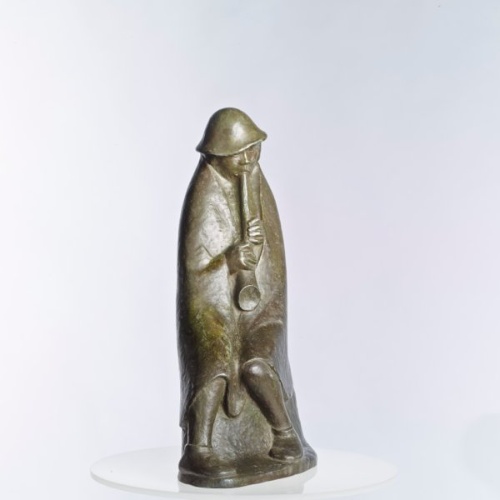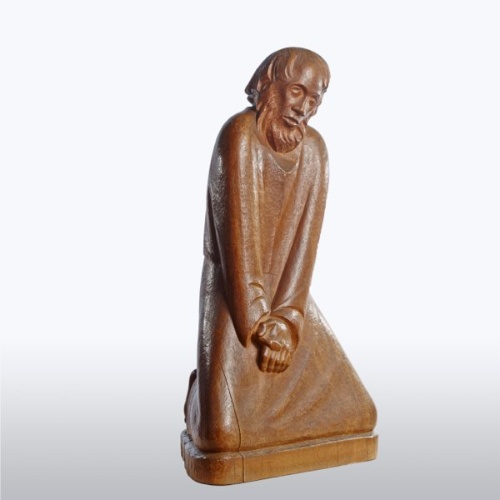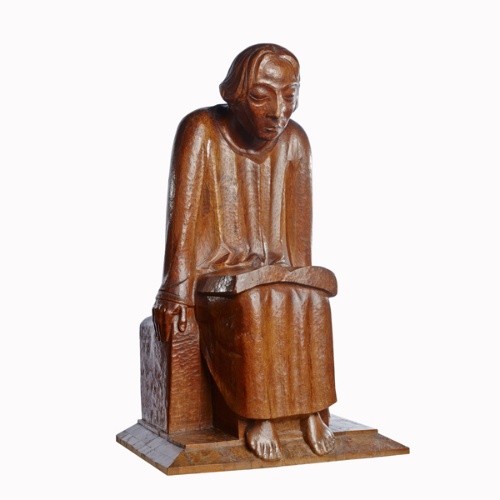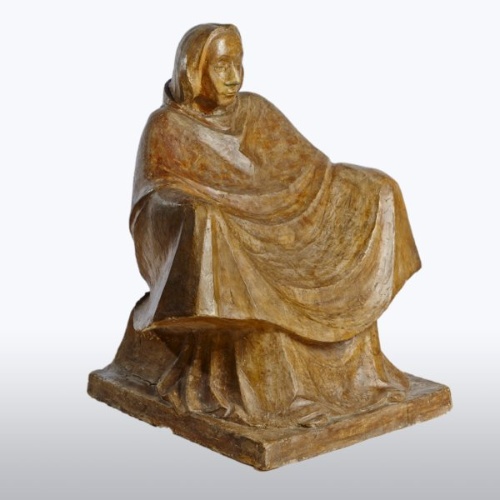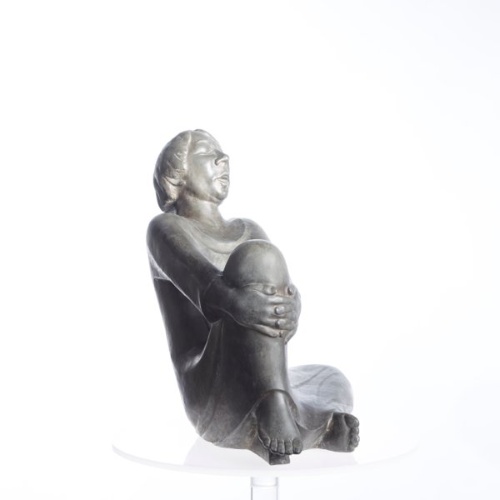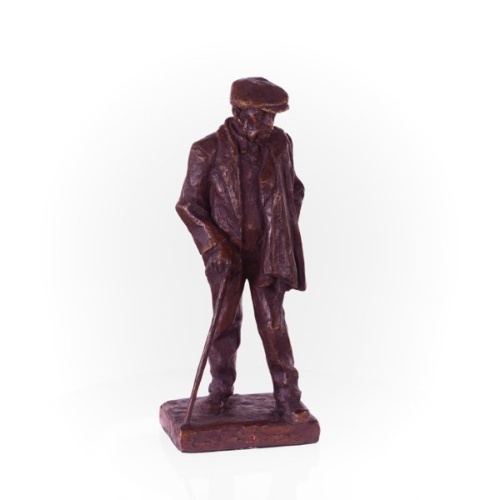Ernst Barlach: The Doubter
- Ernst Barlach (1870 - 1938)
- The Doubter
- 1937
- wood (teak)
- height: 107.5 cm
Although he was no longer in the best of health, in 1937 Barlach still managed to create five wooden sculptures in the year before he died. His Doubter draws on a sculpture from 1930, which he had prepared in several sketches. In the first version Barlach addressed the timeless issue of doubting people, and here is alluding to doubt itself. After the National Socialists came to power in 1933 the attacks increased against Barlach as a person and artist, who started national-reactionary circles with the creation of his soldier memorials in the Weimar Republic. His Walker in the wind from 1934 shows autobiographical traits and the indomitable will of a walker going against the spirit of the time, who will also not be persuaded by repression to abandon his underlying principles based on a human image of mankind.
Barlach‘s attitude towards a totalitarian regime was also not broken by the infamous “degenerate art” action from 1937, during which more than 670 artistic works from public collections and cities were removed and, in some cases, destroyed. Yet the artist questioned whether he had lived his life correctly. The strained figure of the Doubter gives a clear answer to this through its body language and closed composition. He concisely formulated his battle against unreason as a foundation of his art and his ethical behaviour and spoke of the “irreconcilable opposites” of the two attitudes of “reason and, the other, unreason.” (1932)
Text: V. P.



























